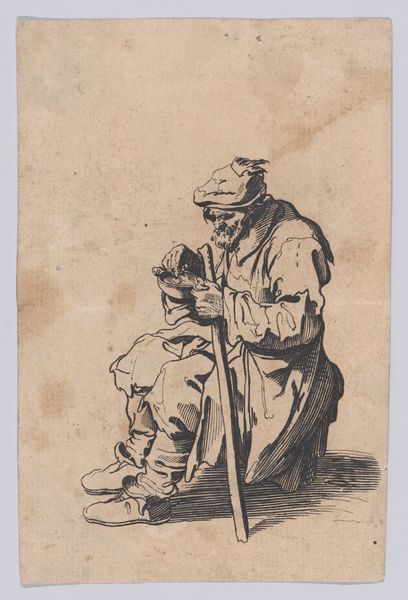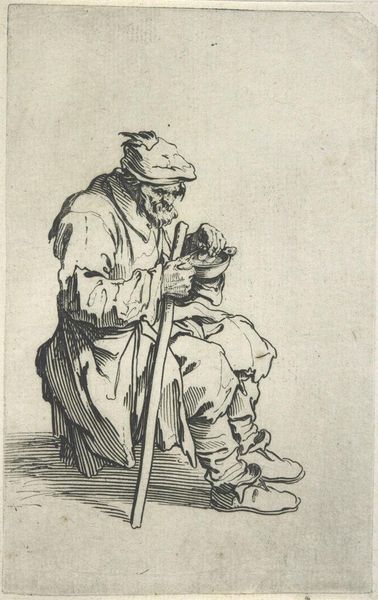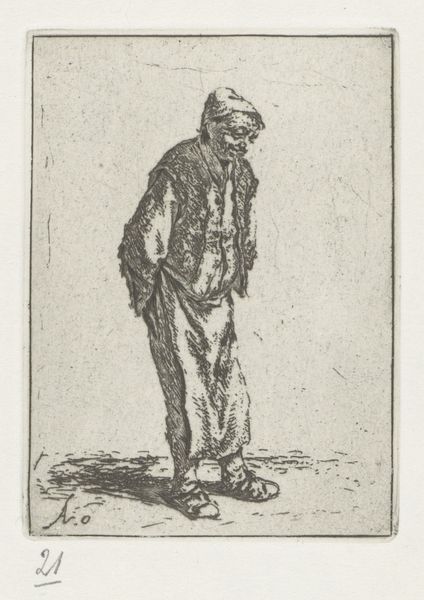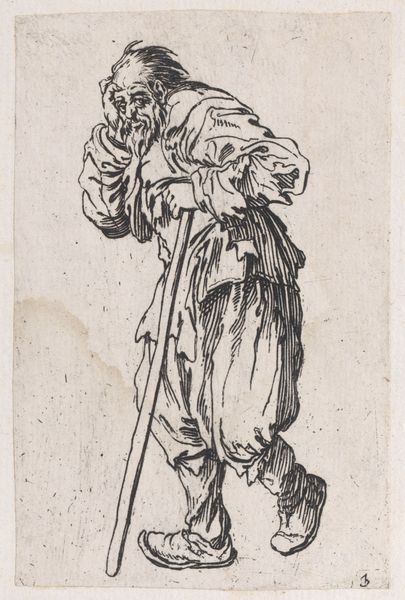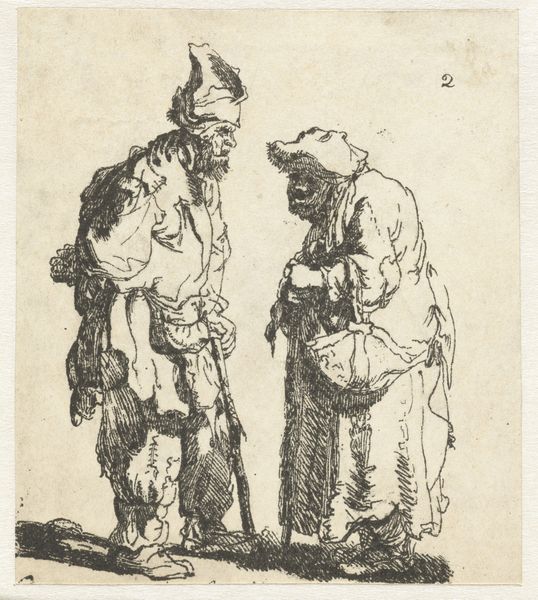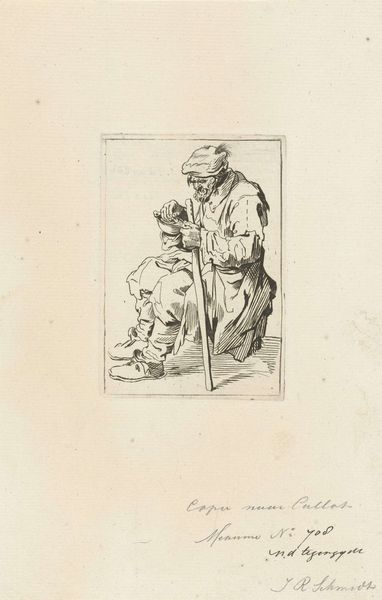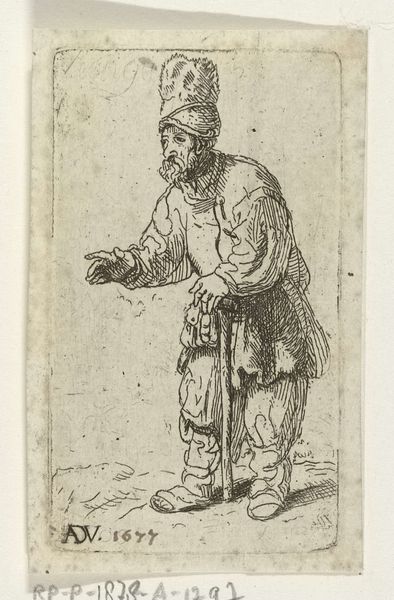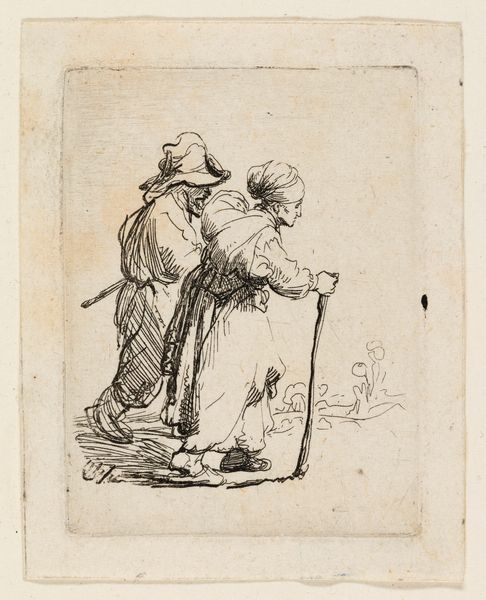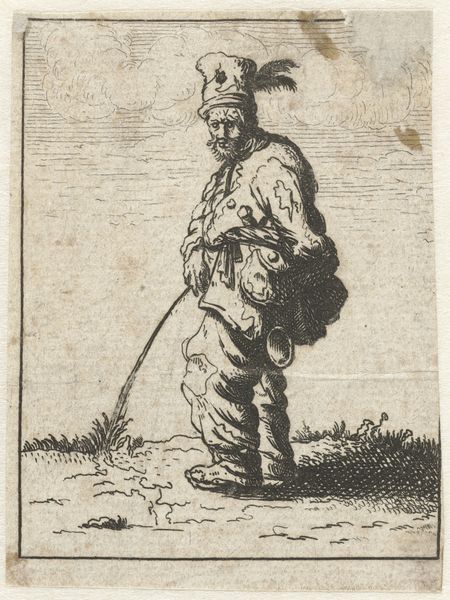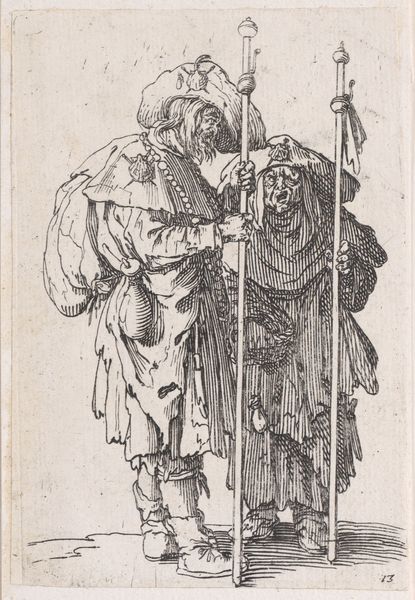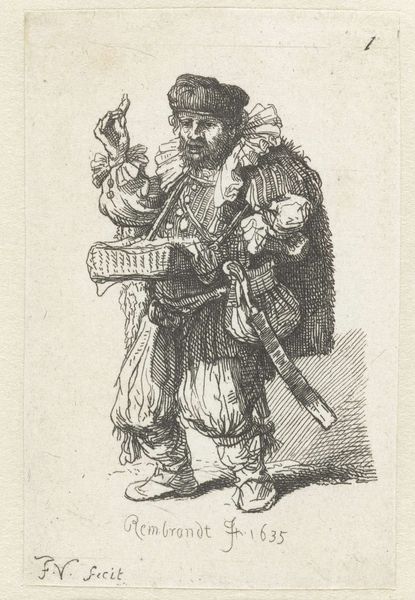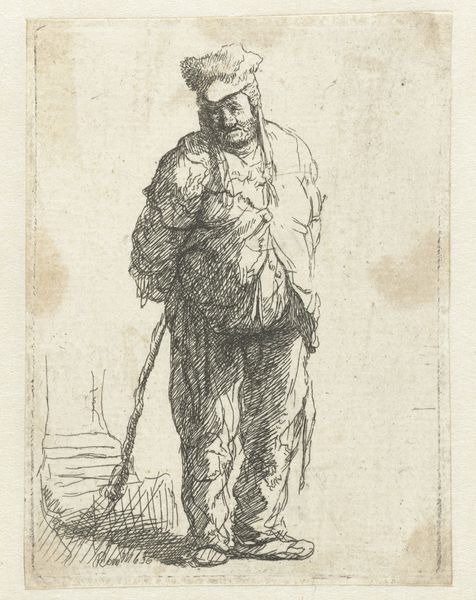
Reverse Copy of Le Gueux Assis et Mangeant (The Beggar Sitting and Eating), from Les Gueux suite appelée aussi Les Mendiants, Les Baroni, ou Les Barons (The Beggars, also called the Barons) 1625 - 1700
0:00
0:00
drawing, print
#
portrait
#
drawing
#
baroque
# print
#
figuration
#
genre-painting
Dimensions: Sheet: 5 7/16 x 3 3/8 in. (13.8 x 8.6 cm) trimmed and backed
Copyright: Public Domain
Curator: Here we have a print, "Reverse Copy of Le Gueux Assis et Mangeant (The Beggar Sitting and Eating)," part of "Les Gueux suite appellée aussi Les Mendiants" from circa 1625-1700, currently held in the collection of the Metropolitan Museum. Editor: There's something immediately compelling in the raw, etched lines. It speaks to a sense of stark simplicity, almost bleakness. The monochromatic palette and concentrated focus certainly draw me into this lone figure. Curator: The artist, an anonymous master printmaker of the Baroque, captures something universal. Beggars often act as cultural symbols representing marginality. Here, we find echoes of social commentary deeply entrenched within art history, particularly in early modern Europe. Editor: The formal elements certainly emphasize his isolation. The figure is predominantly lines creating shadow, but his face has minimal detailing. The diagonal line of the staff and slumped posture create dynamic yet melancholic lines—the work exemplifies the Baroque through this dynamism, though with an intriguing understatement, wouldn't you agree? Curator: Absolutely. Beyond the lines and shadows, the bowl—the offering or taking of sustenance—serves as a powerful symbol. This man becomes an allegory for the basic human condition: the necessity for food, the reliance on charity or his own means of procuring the meal. His clothes, his posture, it’s all telling a familiar story about those on the fringes. Editor: It's striking how this relatively small print—likely an etching given the line quality—achieves such a monumental feeling through compositional strength. I also note that the copy is reversed, meaning there's likely another image from where the print comes from. This only shows the chain of images and visual representations surrounding the figure of the "beggar". It feels like a sign. Curator: Signs and symbols indeed! The very act of eating in such a state also reminds us of the body—the inherent vulnerability that connects all social strata in an unavoidable truth. He is all of us at our most basic need. Editor: So even in a simple form, a simple linear configuration of someone sitting eating can reveal a far bigger symbolic web. It really underlines the expressive power within seemingly simple compositions. Curator: It does indeed. The visual vocabulary of the time is imbued within it, constantly building upon layers of existing symbols. Editor: A fantastic insight! Thank you.
Comments
No comments
Be the first to comment and join the conversation on the ultimate creative platform.
